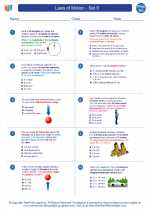Silicate Minerals
Silicate minerals are the largest group of minerals, comprising approximately 90% of the Earth's crust. They are composed of silicon and oxygen atoms, combined with other elements such as aluminum, iron, calcium, magnesium, potassium, and sodium.
Structure of Silicate Minerals
Silicate minerals are classified based on the arrangement of their silicon-oxygen tetrahedra. The most common types of silicate structures include:
- Isolated tetrahedra: Each silicon atom is surrounded by four oxygen atoms in the form of a tetrahedron, with little or no sharing of oxygen atoms with neighboring tetrahedra.
- Single chain silicates: Silicon-oxygen tetrahedra are linked in a chain, with each tetrahedron sharing two of its oxygen atoms with adjacent tetrahedra.
- Double chain silicates: Two single chains of tetrahedra are linked together by sharing oxygen atoms.
- Sheet silicates: Tetrahedra are arranged in sheets, with each tetrahedron sharing three of its oxygen atoms with adjacent tetrahedra.
- Framework silicates: Tetrahedra are linked together in a three-dimensional framework, with each tetrahedron sharing all of its oxygen atoms with neighboring tetrahedra.
Common Silicate Minerals
Some common silicate minerals include:
- Quartz: A framework silicate mineral with a hardness of 7 on the Mohs scale.
- Feldspar: A group of minerals that includes potassium feldspar, plagioclase feldspar, and others.
- Mica: Sheet silicate minerals known for their perfect cleavage and ability to split into thin, transparent sheets.
- Amphibole: Double chain silicate minerals that include minerals such as hornblende and actinolite.
- Pyroxene: Single chain silicate minerals that include minerals such as augite and diopside.
Study Guide
When studying silicate minerals, it's important to focus on the following key points:
- Understand the chemical composition of silicate minerals and the role of silicon and oxygen in their structure.
- Learn to identify the different types of silicate structures, including isolated tetrahedra, single chain silicates, double chain silicates, sheet silicates, and framework silicates.
- Memorize the common silicate minerals and their properties, including hardness, cleavage, and color.
- Practice identifying silicate minerals using their physical and optical properties, such as crystal form, cleavage, and refractive index.
- Explore the uses of silicate minerals in industrial applications, such as in the production of glass, ceramics, and construction materials.
By mastering these concepts and properties, you'll develop a strong understanding of silicate minerals and their significance in the Earth's crust.
.◂Physics Worksheets and Study Guides High School. Laws of Motion - Set II
Worksheet/Answer key Laws of Motion - Set II
Laws of Motion - Set II  Worksheet/Answer key
Worksheet/Answer key Laws of Motion - Set II
Laws of Motion - Set II  Worksheet/Answer key
Worksheet/Answer key Laws of Motion - Set II
Laws of Motion - Set II 

 Worksheet/Answer key
Worksheet/Answer key
 Worksheet/Answer key
Worksheet/Answer key

The resources above cover the following skills:
PHYSICAL SCIENCE (NGSS)
Energy
Students who demonstrate understanding can:
Develop and use models to illustrate that energy at the macroscopic scale can be accounted for as either motions of particles or energy stored in fields.
PHYSICAL SCIENCE (NGSS)
Energy
Students who demonstrate understanding can:
Develop and use models to illustrate that energy at the macroscopic scale can be accounted for as either motions of particles or energy stored in fields.
PHYSICAL SCIENCE (NGSS)
Energy
Students who demonstrate understanding can:
Develop and use models to illustrate that energy at the macroscopic scale can be accounted for as either motions of particles or energy stored in fields.
PHYSICAL SCIENCE (NGSS)
Energy
Students who demonstrate understanding can:
Develop and use models to illustrate that energy at the macroscopic scale can be accounted for as either motions of particles or energy stored in fields.